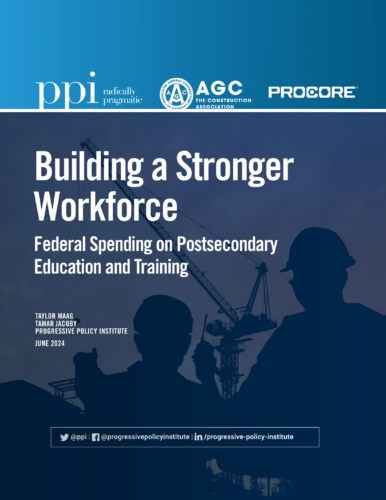Seventy-two percent of America is rural, yet these areas are only home to 14 percent of the population. Rural communities across the U.S. have higher poverty rates and lower education levels compared to those in urban and suburban areas.
While 41 percent of urban adults have a college degree, only 28 percent of rural adults do. While in most states, rural high school students achieve graduation rates similar to urban and suburban peers, their college enrollment rates are much lower. Without a degree, or a necessary alternative, rural students are less able to find higher-skilled and higher-paying jobs.
Going to college is a major decision, for anyone, but especially rural students who face increased barriers in accessing postsecondary education. Not only are there not as many colleges in rural areas, but getting to campus can pose a logistical challenge due to the distance students have to travel. This is especially hard if you are an adult learner, who make up over 30 percent of today’s postsecondary students. These learners are usually working or have a family and don’t have the flexibility to travel for hours to continue their education.
Rural America also continues to question the value of degree programs — grappling with the time, cost, and return on investment. Additionally, many communities and families fear that students who pursue a college degree will ultimately leave to seek better-paying careers elsewhere.
It’s clear college as we know it is not working for rural students. To close these gaps in educational attainment and economic opportunity, the nation’s higher education system must evolve to create more accessible, flexible, and industry-responsive opportunities.
Online education presents a solution to this educational divide. Remote, online opportunities offer a flexible and convenient way for students to learn. Instead of traveling far distances for their coursework, rural students can pursue online learning at their own pace, on their own time, and from the comfort of their own home. This flexibility eliminates the stress and cost of a long commute, the difficulties of juggling work and school, and having to build a schedule around very specific class times.
Online learning also helps to mitigate the concern of losing the younger generation to urban areas for higher education. Instead, these opportunities allow learners to stay in their community while also presenting a local economic development strategy. A more skilled workforce attracts employers which hopefully means more jobs and increased economic prosperity in the region.
However, even with the benefits, more must be done to ensure rural students can access online learning opportunities that yield strong economic returns.
First, reliable access to the internet remains a concern for rural students. Only 63 percent of rural adults say they have access to the internet at home, compared with 75 percent of urban adults. Policymakers and leaders must ensure these communities have access to basic internet so they can take advantage of remote education options. For example, Western Governors University (WGU) is working to help more students gain internet access by offering scholarships and working with political leaders to drive comprehensive solutions to the challenge. The Biden Administration has also invested in this effort through COVID recovery bills like The American Rescue Plan Act’s Digital Equity Act Program — providing $2.75 billion to establish three grant programs that promote digital equity and inclusion. They aim to ensure that all people and communities have the skills, technology, and capacity needed to reap the full benefits of the nation’s digital economy.
Second, online learning can be isolating, especially if you are learning in a remote, rural community. Manpower Demonstration Research Corporation (MDRC) has an idea that to enhance online education, college leaders, policymakers or others could create telecommuting hubs. These coworking spaces would offer broadband and office space — to help learners work together on shared challenges, while also allowing program completers to stay in their communities while pursuing high-wage work.
And lastly, federal regulation matters. Many rural schools have started partnering with online program managers (OPMs) for help launching or supporting online programs. OPMs supply a package of products, technology, and skill-sets that may be outside the core mission, experience, and expertise of a given college or university — helping to provide services outside a college or university’s reach. Writing on behalf of St. Bonaventure University in New York, Michael Hoffman said that their “OPM brings tremendous knowledge of online student recruitment, retention, and instructional design, which has been fundamental to our ability to offer high-quality, fully online programs.” However, last year, the Department of Education proposed a regulatory change that would have a detrimental impact on the ability of rural colleges to offer online classes through OPMs. To ensure more individuals — especially in rural communities — have access to online programming, federal leaders must regulate in a way that allows and incentivizes positive partnerships with OPMs, while ensuring these partnerships are fair, non-discriminatory, and yield strong student outcomes.
Online education emerges as a transformative solution to the multifaceted challenges hindering rural students’ access to postsecondary education. By overcoming geographical barriers, providing flexibility in scheduling, and mitigating the phenomenon of brain drain, online learning opens doors to educational opportunities previously inaccessible to many in rural communities. Its adaptability and accessibility not only empower students to pursue higher education but also contribute to the revitalization of rural economies and the retention of talent within these communities. As we continue to embrace the digital era, the promise of online education in bridging the gap between rural and urban educational opportunities remains a beacon of hope for a more equitable and inclusive future.




